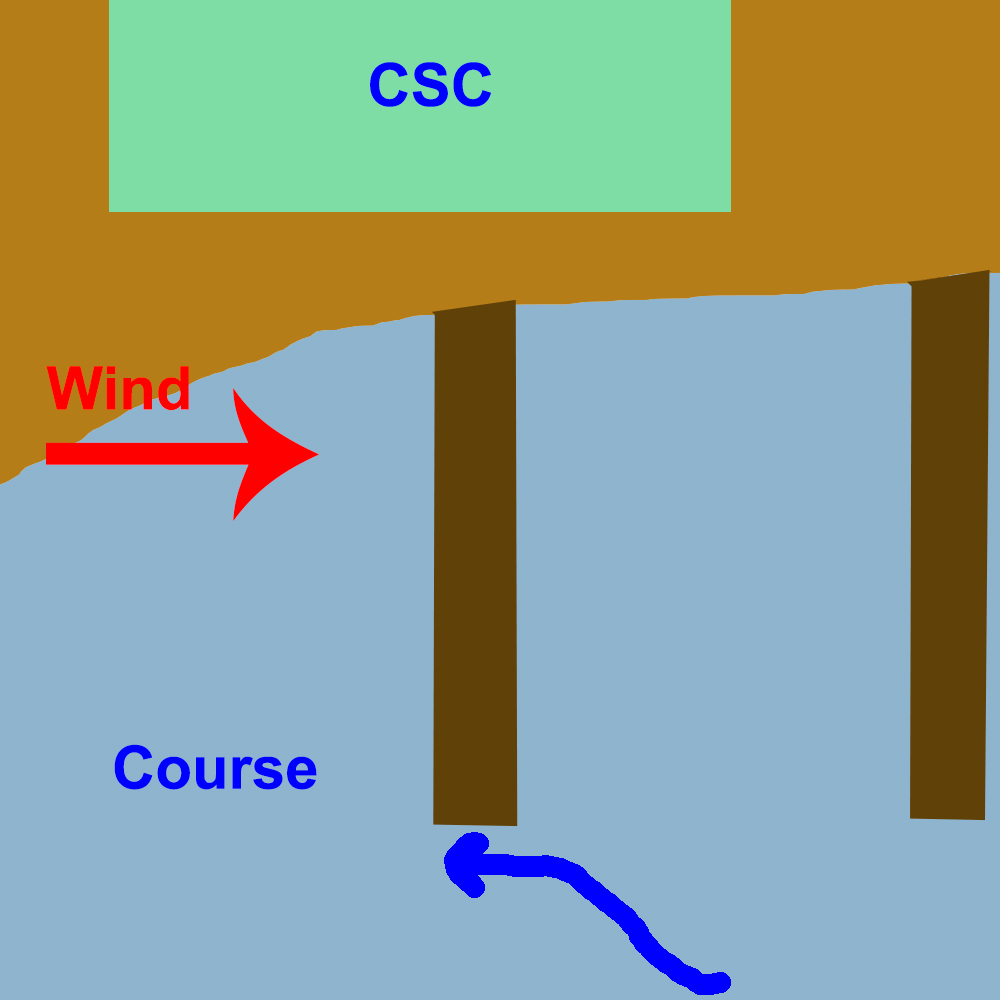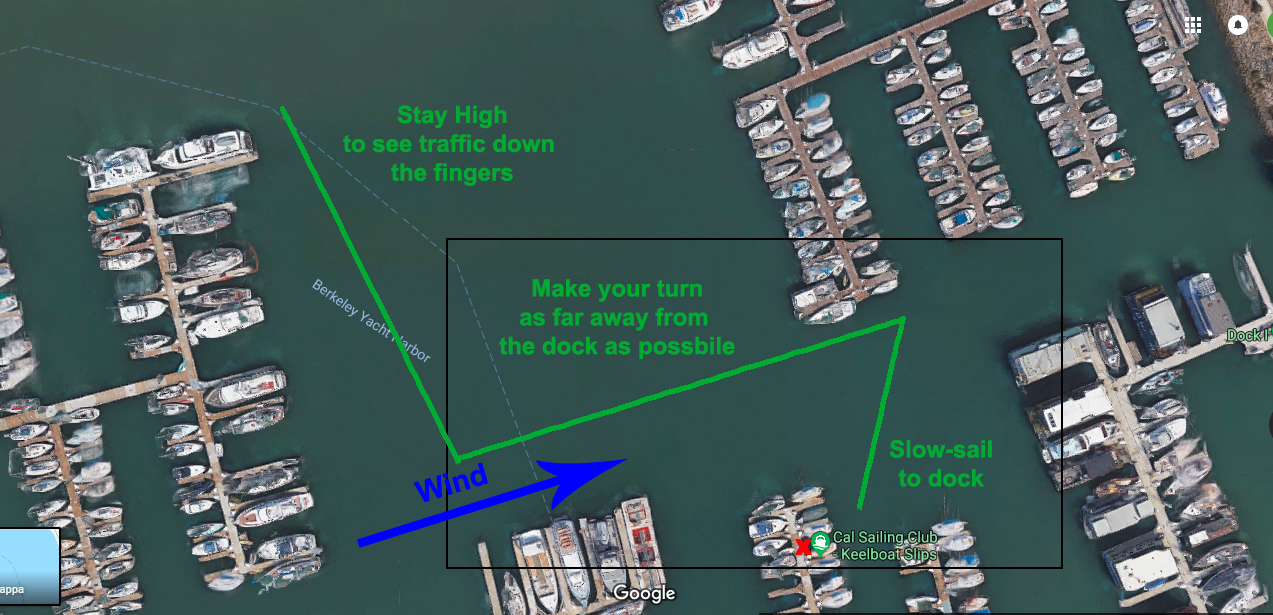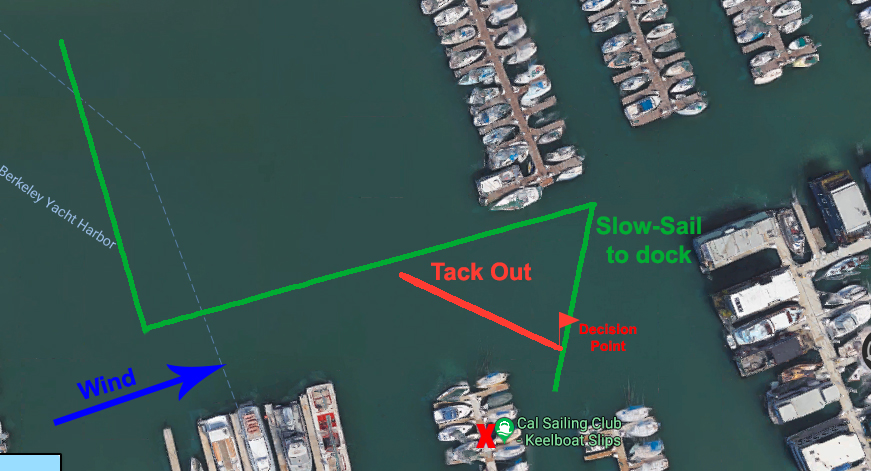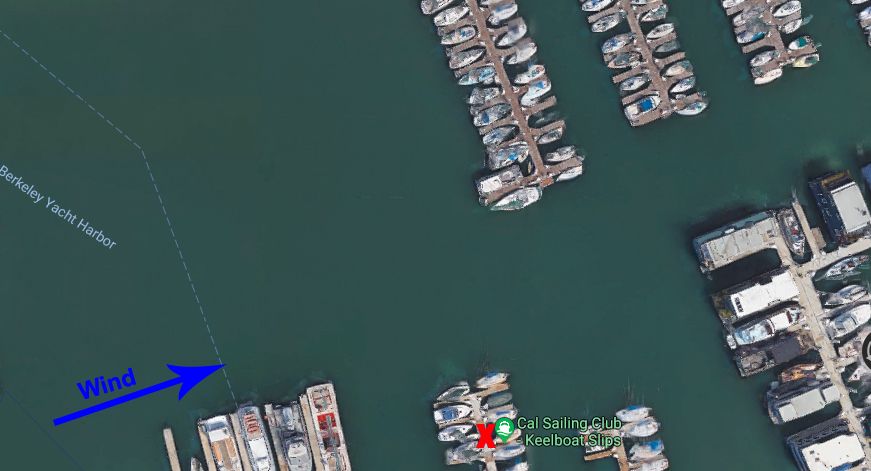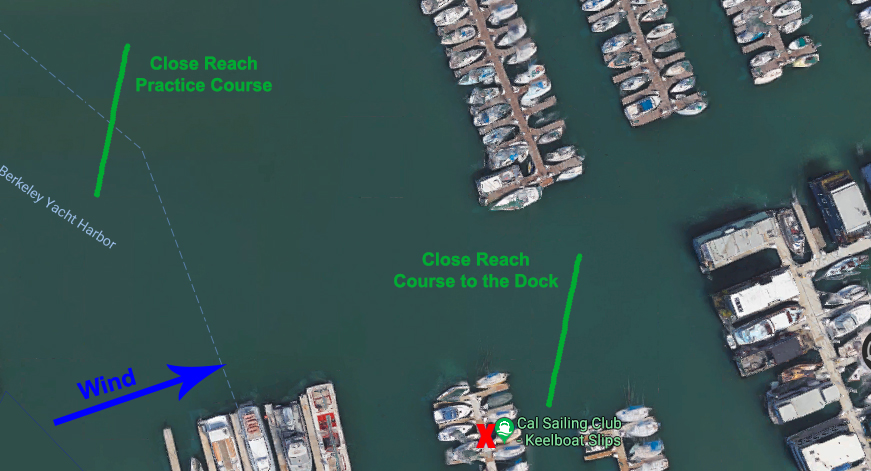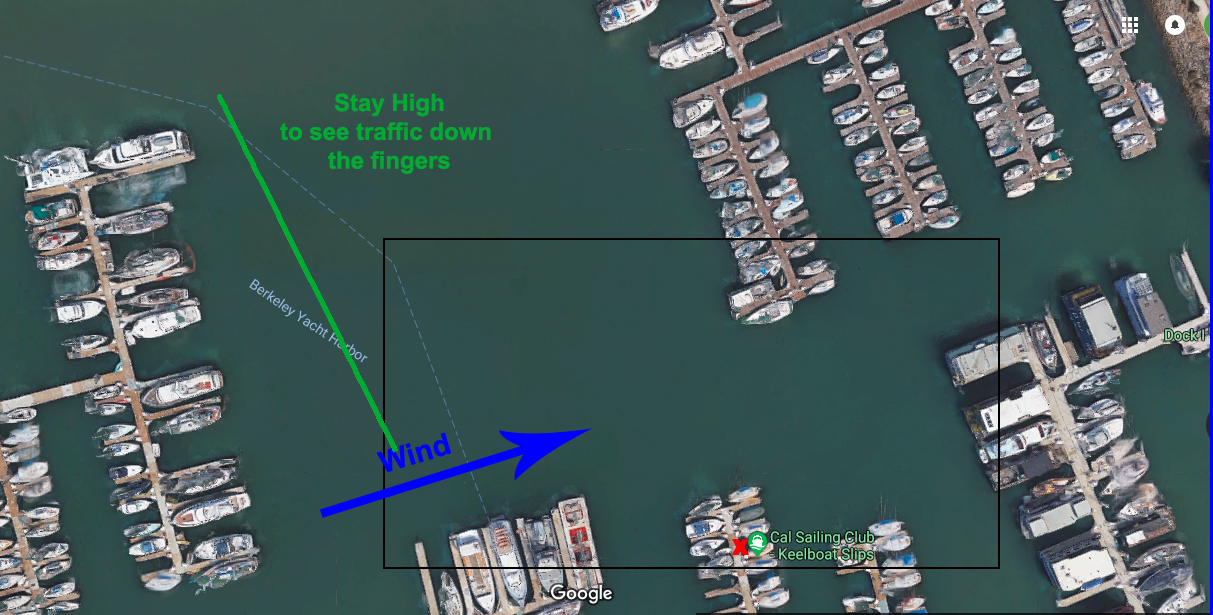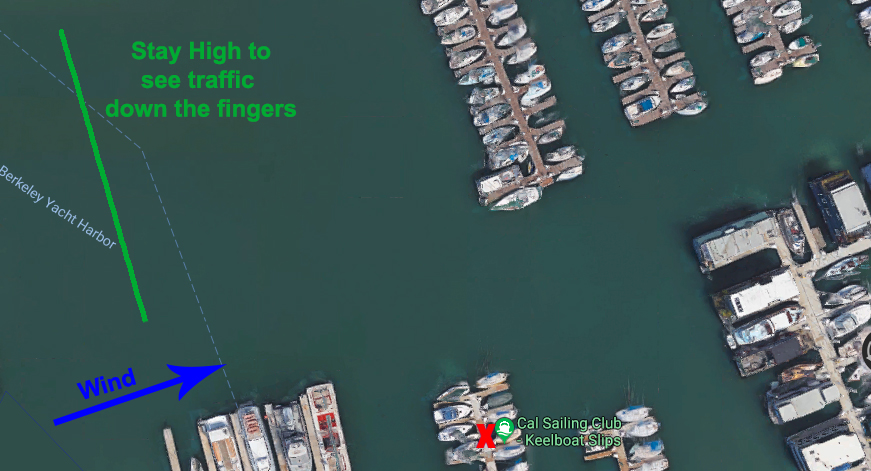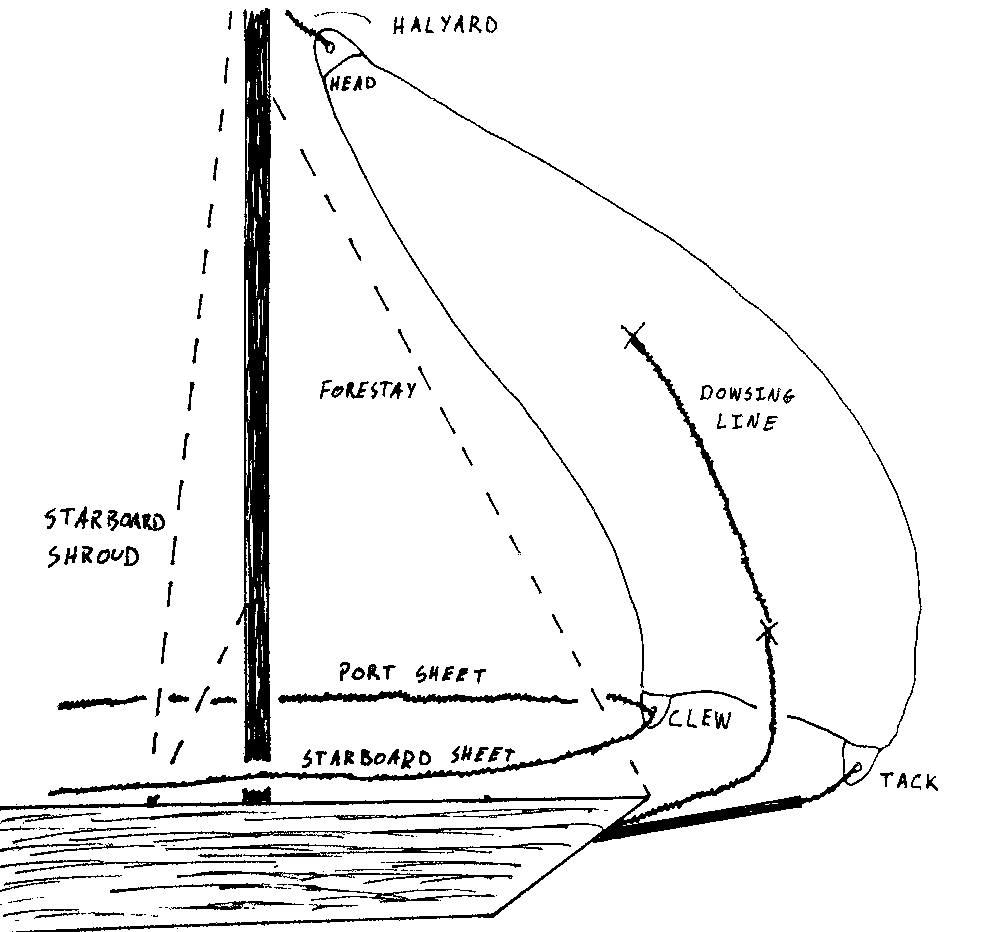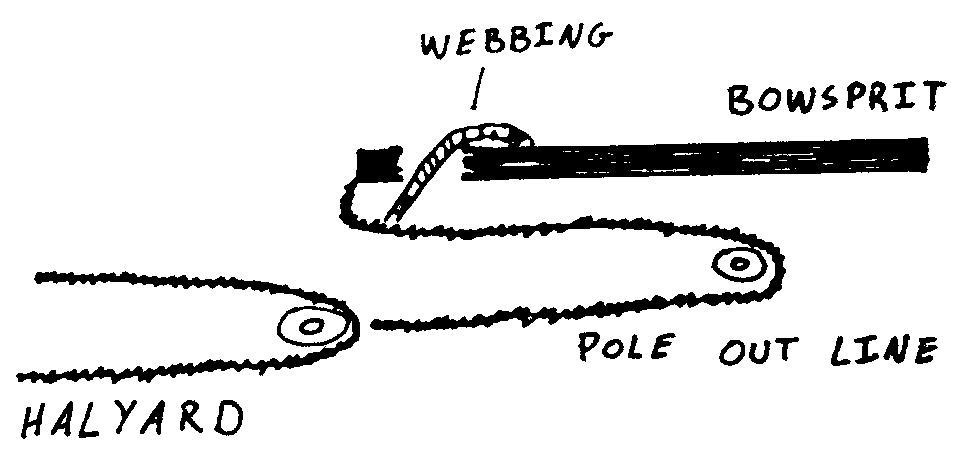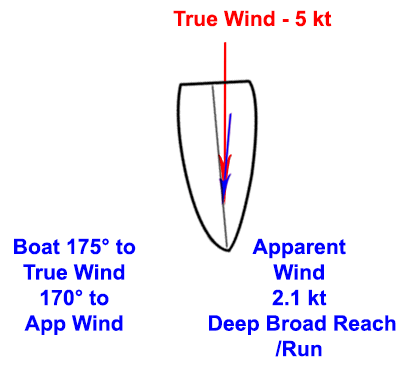
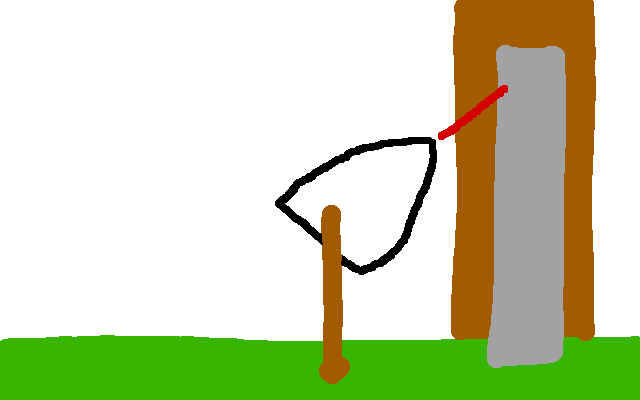
There often isn't enough communication around how to use the hoist properly. In this post we're going to talk about safety, efficiency, and some tips on dropping and pulling a boat single-handed.
Personal and Boat Safety
The two big rules of using the hoist are:
- Never ever EVER be under the boat while it's in the air.
- Don't hit the shrouds or spreaders on the hoist arm.
The first issue most comonly happens when the centerboard falls down and someone reaches under the boat to push it back up. Or if there's a long line of boats waiting to come out of the water and as soon as one boat starts to go up into the air the next person walks their boat down towards the sea wall. Then when the boat in the air swings out, it's over the other boat.
Both of these are huge no-no's. The sling/hoist does break. This happened recently with a Venture in the air that ended up falling 5 feet back into the water. The boat and everyone around was ok, but If there had been another boat underneath, waiting their turn, it'd be two broken boats instead of zero. If there had been someone on that boat waiting to attach the sling, as there often is, it would have been way, way worse. Always beware of where the boat is, and never get underneath it, and please say something if you see someone about to.
For the shrouds and spreaders, this is the most likely way to damage the boat while on the hoist. Always keep an eye on the mast and shrouds to make sure the boat isn't going to spin into the hoist arm. This is why someone should have control of the boat at all times. The person on the sea wall doesn't let go of the stern until the person on the dock is pulling on the bow line so the boat can't spin. Same with coming out of the water. The person on the dock doesn't let go of the line until the person on land has their hand on the stern.


